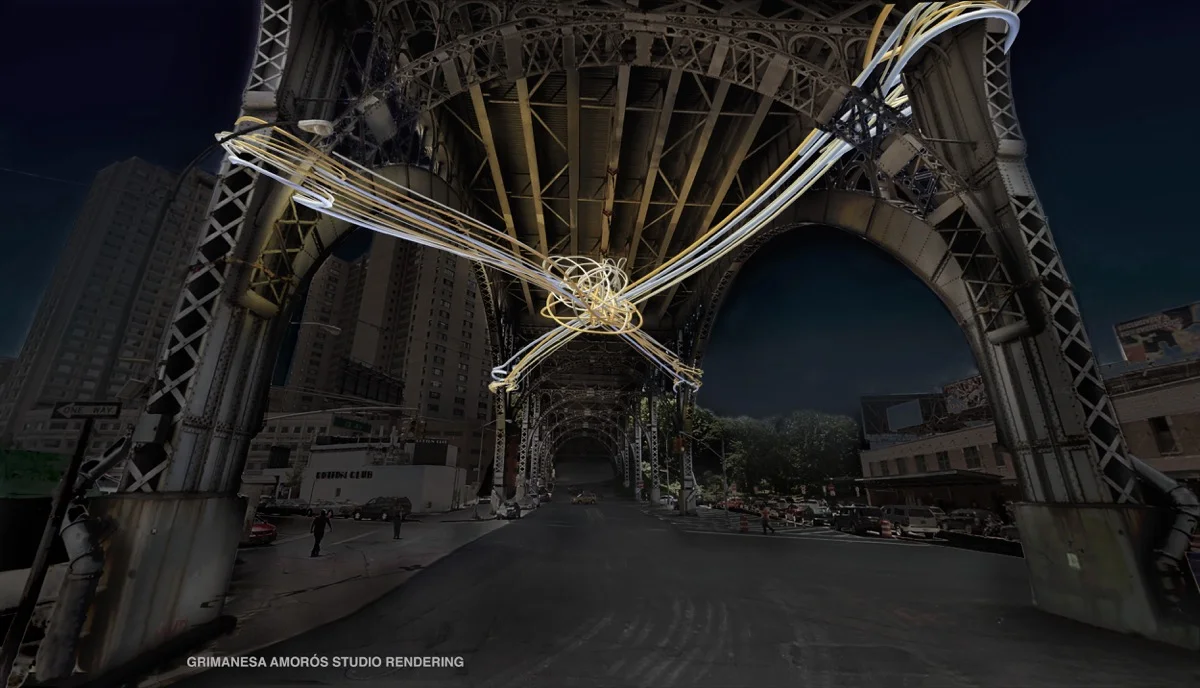Light and Technology as Public Art in Harlem.
It is a rare occurrence to find such architecture; a perfectly symmetrical, 70-foot-tall structure whose elements repeat over 25 times. The Arches of Harlem will utilize the Riverside Drive Viaduct as a canvas for light art.
The structure allows views from long distance and room below for immersive experiences and digital storytelling.
SIMUL, a signature art installation to be beneath under the Riverside Drive Viaduct at 125th Street, will play as a double metaphor. It’s connecting Harlem to the wider New York, as well as bringing local residents together under the bridge. SIMUL intertwines with the bridge, and at the center is the meeting point of the tubing system, which can be called the nucleus of the piece. The center could be described as an intermingling of tubes, which is meant to represent how, although the people are all different, the city is one interconnected community. Everyone who lives in the city, even short-time visitors, is a New Yorker.
The Harlem Renaissance was the name given to the cultural, social, and artistic explosion that took place in Harlem between the end of World War I and the middle of the 1930s. Harlem then was a cultural center and drew writers, artists, musicians, photographers, poets, and scholars of African descent to the area.
Focus Lighting and the West Harlem Art Fund have collaborated with celebrated artist Dianne Smith to create a series of digital paintings to adorn the Arches of Harlem, as its first installation.



